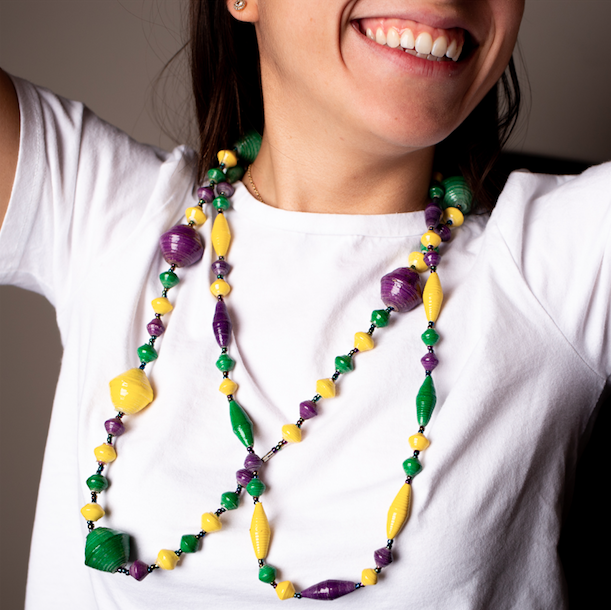Throw me something, Mister. Without plastic please
February 23, 2019
They come in different sizes, shades and colors. From green to purple, to black and gold. Some even light up and some clog drains. But the colorful plastic Mardi Gras beads are doing more harm to the environment than good, according to Bob Thomas, Loyola professor and director of the Environmental Communication Center.
New Orleans found thousands of pounds of beads clogged in drains last year with their efforts of cleaning the city, according to Thomas. Thomas said he goes to a lot of parades and when they are over it is remarkable how much plastic is sitting on the streets, which he says is likely to not be recycled, or re-thrown since people have been walking on them and because they are usually broken. It is what he calls “absolute horrible waste.” Thomas said if the beads hit the street and are not picked up, they will be there five years from now.
“The streets are swept after the parades, but, if the beads get washed down the drain, the beads will clog the drain which create problems,” Thomas said.
Thomas thinks there is an alternative for this issue and it could improve environment.
“Bio-degradable beads serve the same purpose as the plastic beads. They are beads, they throw well, and they catch well,” Thomas said.
Atlas Handmade Beads, a company that sells bio-degradable beads made from newspapers handcrafted by women in Uganda, was created by Kevin Fitzwilliam, a former student of Thomas and a 2003 Loyola University of New Orleans graduate. Fitzwilliam said he came up with this idea from his love of Carnival, which started as a small project and transformed in to a small business. He said he wanted to find ways of making Carnival less wasteful because he cares about the environment.
Atlas Handmade Beads has been around for just over a year and a half and sells bracelets, necklaces and coin purses while also increasing the standard of living for his employees in Uganda. Fitzwilliam says his company has a big focus on Carnival, but it also has a lot of other audiences. They have a line for Saints fans, with black and gold items. Also, they have items for school colors. He said his beads have been thrown in some parades by individual riders who are members of Krewe of Iris and Krewe of Muses, but his company is not the only one that sells jewelry made from newspapers. Kevin said what sets his apart from the others is the message he wants to send through his beads of addressing the conversation of do we have to continue to have hordes of plastic beads in New Orleans.
“The goal is to provide an alternative for Chinese plastic beads, so that we can discuss where our products come from, specific to Mardi Gras. (It is) about retaining everything we love about Mardi Gras, but about reducing the amount of waste that is associated with Mardi Gras,” said Fitzwilliam.
Fitzwilliam wants people to understand what it means to care for the environment and protect it, because for him it is very important.
“Real focus is people being aware of where their products come from, thinking about being a global citizen, and thinking and talking about sustainability,” said Fitzwilliam.








